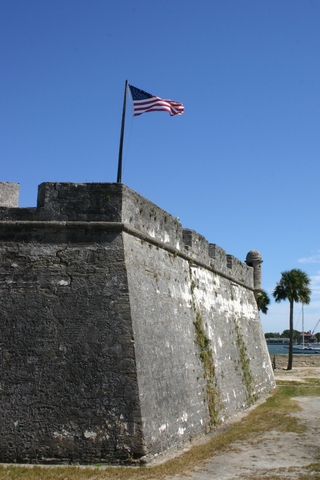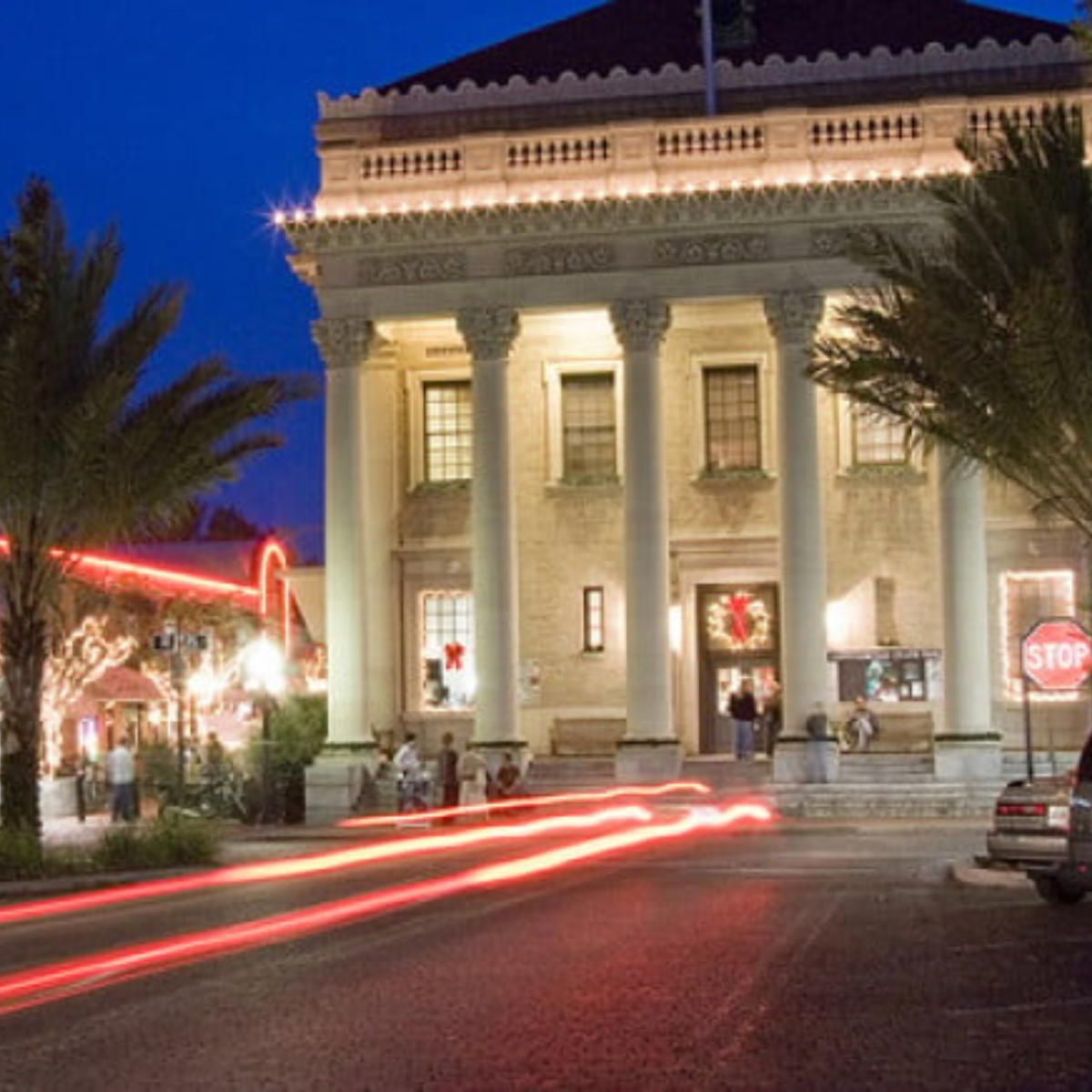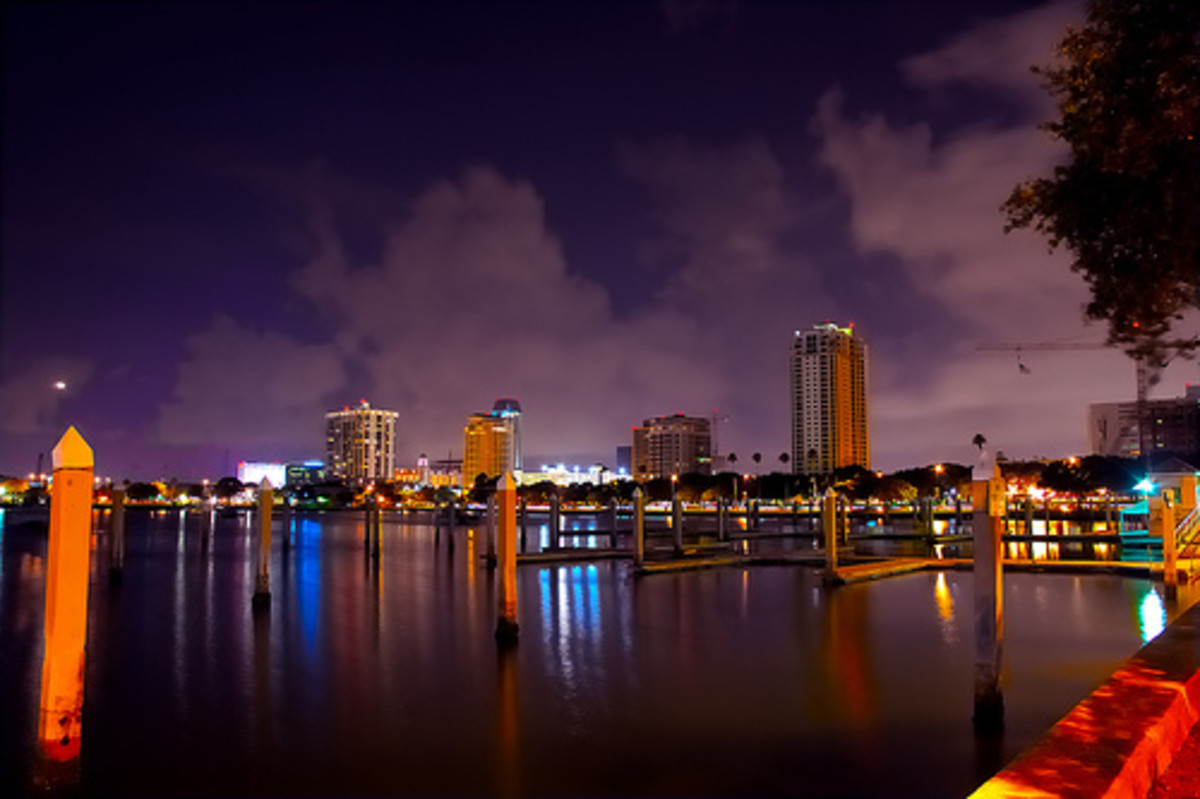- HubPages»
- Travel and Places»
- Visiting North America»
- United States»
- Florida
Castillo de San Marcos
Castillo de San Marcos
Historical Places to Visit in the United States: Castillo de San Marcos
Castillo de San Marcos sits on the banks of the Matanzas River located in Saint Augustine, Florida. It is the oldest masonry fort in the United States. Construction of the fort lasted about ten years beginning in 1672. St. Augustine was founded by the famed Spanish explorer Pedro Menendez in 1565; it is regarded as the oldest permanent settlement inside the borders of the US. It was built during the time of Spanish colonization. The fort is known as a “masonry star fort” due to it being outfitted with four lookout towers, or bastions extending from each of the fort’s four corners creating a star-like appearance. These four bastions are named San Pedro, San Agustin, San Carlos, and San Pablo. Internally, Castillo houses a main central yard that is surrounded by what were once military offices, prison cells, general stores, bathrooms, sleeping quarters, and places of worship. Today these rooms have been recreated to give them their original look and feel. The entire fort is surrounded by a moat which is approximately seven feet in depth. In the event of attack, this moat was flooded with sea water from the neighboring river. The Castillo was constructed primarily of coquina which is a type of stone derived from crushed shells. Once these shells are bonded together, the resulting stone is noticeably similar to limestone. The coquina was originally coated in red paint; upon close examination of the fort’s walls one can still see the remnants of this paint in various places. Thanks to Florida’s tropical climate, the fort is open to the public every day year round, the only exception being Christmas day, the 25th of December.
Beautiful St. Augustine!
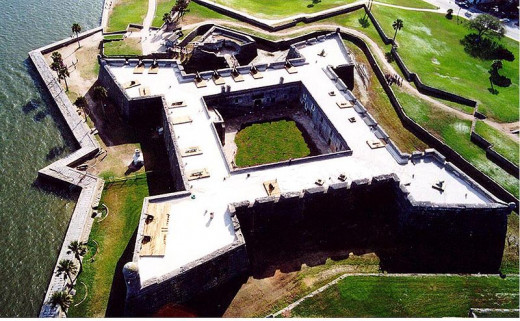
The Ancient City: St. Augustine, Florida
Visiting Castillo de San Marcos
Although the fort is open year round, it does have its peak times for visitation. Typically the fort is least visited during the months of September, October, and November. Conversely, peak visitation months are June and May when an average of 3500 people travel to the site daily. The Castillo is considered to be a “walk-in” park. As such, there is no option to reserve a ticket for a visit on a later date. However, one can purchase a ticket directly from the onsite box office located at the entrance of the fort that is valid for seven consecutive days thereafter. Each ticket admits one person one time. Adults, meaning those over the age of 16 are granted admittance for $7. Those visitors under 16 are admitted without charge as long as they are accompanied by an adult. St. Augustine is not a metropolitan area; therefore, there is plenty of parking available immediately in front of the fort for the cost of $1.50 per hour or at the city’s parking garage which charges the same nominal fee, located just a block away. Castillo de San Marcos is designed as a place meant for self-guiding, meaning there are no official tour guides. However, there are park rangers that offer interpretive talks discussing the historical significance of the fort. Moreover, there are well-trained, educated re-enactors that depict how life existed in the fort. The most popular of these reenactments are the daily cannon firings which demonstrate how the fort’s weaponry was used in times of attack. There are numerous locations within the fort where guests can procure brochures and maps that will help guide their voyage around the site. Castillo is the centerpiece of the oldest city in the United States. Therefore, visitors interested in historical landmarks are attracted to the site. Florida is the only state in the country that was subjected to Spanish colonial rule, with St. Augustine being its most strategically important city during those times. Where all other historical American cities are deeply rooted in English history, St. Augustine, Florida is uniquely known for its Spanish influence, architecture, and history. Throughout the fort’s long illustrious history its ownership changed hands several times, yet, despite many attempts to topple the fort, it was never taken by force, but only through negotiations.
Fort Castillo de San Marcos
Beautiful Scenery

Florida travel guides
Another Angle
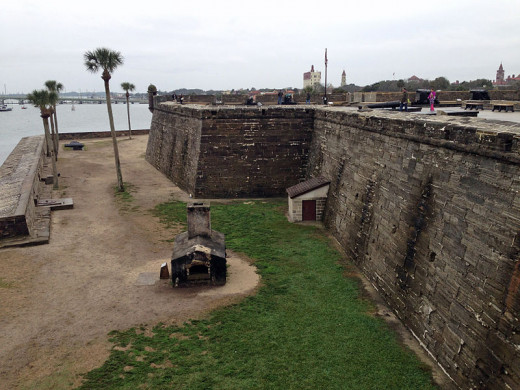
Another Great US Vacation Destination:
The Political History of Castillo de San Marcos
The fort was established by the Spanish to offer protection from the English and local native tribes not only to its military personal but also to the residents of St. Augustine. This was first demonstrated in the winter of 1702 when the English unsuccessfully laid siege to the town for two grueling months. During this period, all of the town’s 1200 residents and 300 soldiers took shelter inside the fort where they remained protected during the attack. The attack was finally repelled when a Spanish fleet arrived from Havana, Cuba. Before retreating north to the Carolinas, the English burned their ships to prevent their capture. They also burned the entire town, leaving only the fort standing. Spanish losses during this attack were considerably smaller than the losses suffered by the English. The coquina walls were effective in absorbing the artillery fire from the English ships. Today, tourists can still see the shallow cannonball sized pot holes found on the walls facing the river. Not to be deterred, the English tried again to take the fort in 1740 under the leadership of General James Oglethorpe, the founder of Georgia. Once again the Spanish residents and military personnel congregated inside the protective walls of the fort. On this occasion the English invaders attempted to starve out the Spanish by way of blockading all avenues, including the inlet leading to the town. Though Spanish morale was quite low during this time, the English grew tired of fighting and blockading and they eventually retreated, failing to wrest Castillo and St. Augustine from Spanish control. Finally, on 21 July 1763, the English were able to gain control of Castillo and all of Spanish Florida via the Treaty of Paris (1763) which brought the Seven Years War between England and Spain to its conclusion. During this time Castillo was renamed by the British as Fort St. Mark. During this period the fort fell into slight disrepair as it was only used as a prison for housing American prisoners of war during the United States’ war of independence from the English. Only after holding Florida for twenty years, the English were forced to vacate the city due to their defeat in their war with the American colonists in accordance to the terms drafted in another Treaty of Paris, this one being in 1783. The fort was retaken by Spanish forces without firing a shot the following year. When the Spanish regained autonomy over Florida, they found a greatly changed society as most Spaniards departed during English rule, while many British citizens remained. This resulted in many skirmishes between the English and Spanish which caused great concern to the newly independent United States. Due to Spain’s inability to successfully govern the inhabitants of the territory, their relationship with the United States faltered and under increasing pressure they were forced to relinquish Castillo de San Marcos as well as all of Florida to the United States as was outlined in the Adams-Onis Treaty (1819). The Americans shortly thereafter renamed Castillo as Fort Marion. The United States remained in control of the fort until the start of the American Civil War in 1861. During this time the fort was used once again used to house prisoners, this time the captives were Native Americans whom the United States viewed as problematic savages. As Florida seceded from the US in the beginning of the Civil War, the fort fell into the hands of the rebellious Confederates. Once again, the fort changed ownership without the need for firing a single shot. After only one year Castillo was peacefully surrendered by the acting Confederate mayor to a Union Navy fleet. The fort’s last known official function came in 1898 when it was responsible for jailing over 200 deserters from the Spanish-American War. In 1924 the fort was placed on the list of official national monuments. During 1942 the US Congress elected to name the fort by its original name of Castillo de San Marcos out of respect for its Spanish heritage. In 1966 the fort was listed on the National Register of Historic Places under the control of the National Park Service.
Firing Canon at Castillo de San Marcos, St Augustine
Castillo De San Marcos
Conclusion
Castillo de San Marcos is a popular tourist destination occupying 2.5 acres. For a fair price visitors can get a firsthand experience of what life was like during the fort’s active years. The fort and the city that plays host to it, St. Augustine, is unique to American historical sites in that it represents Spanish colonial influence not found anywhere else in the Eastern United States. Moreover, visitors to Castillo can say they have been to the oldest city in the US.
St. Augustine, FL - Castillo de San Marcos Pt. 1 - Homeschool Field Trips
Castillo De San Marcos
